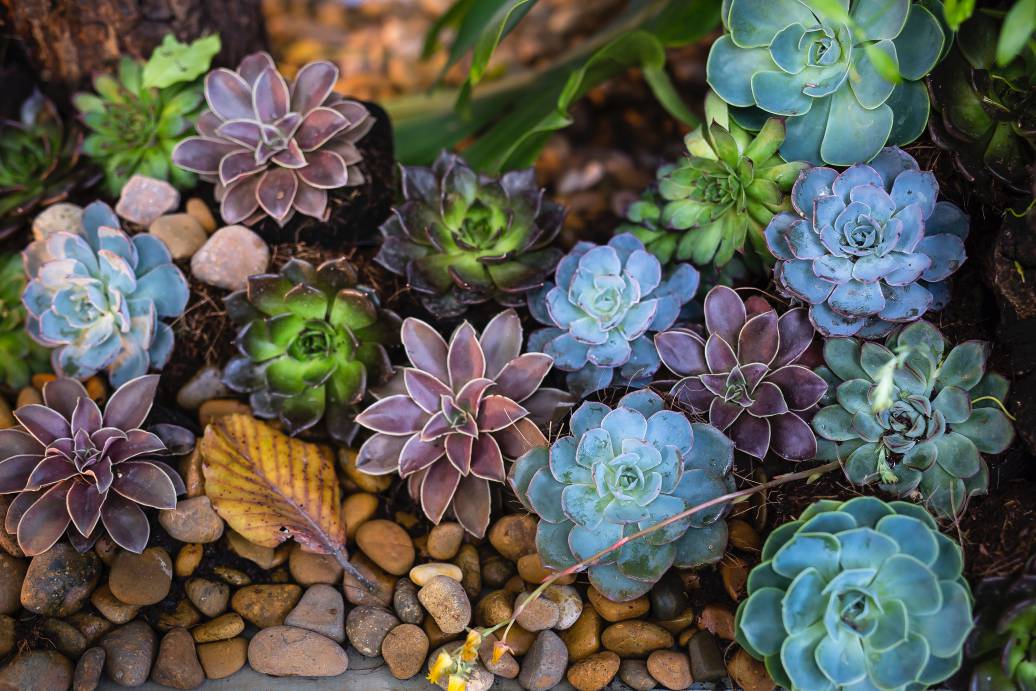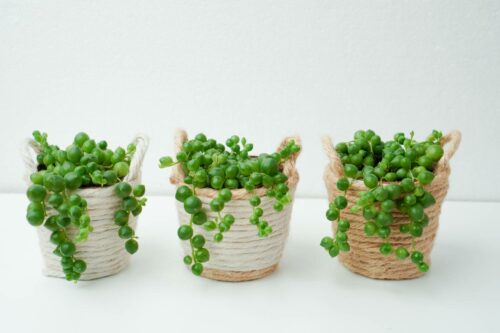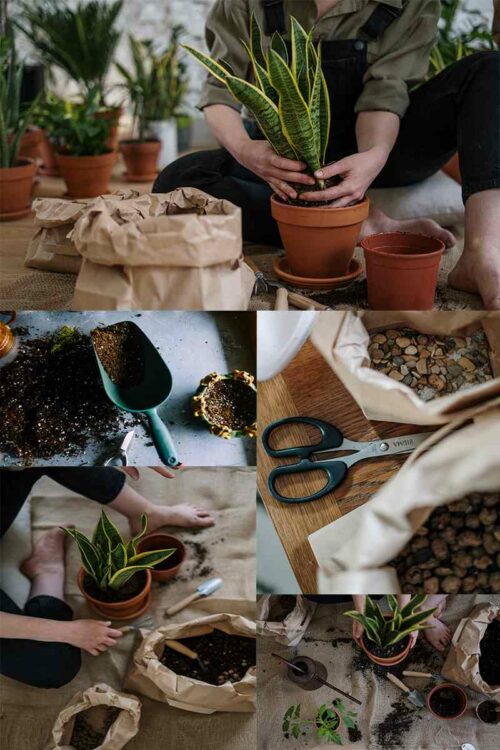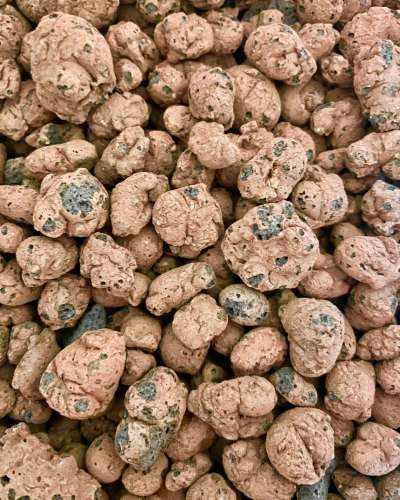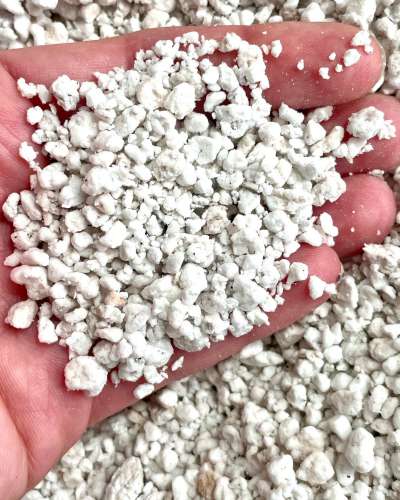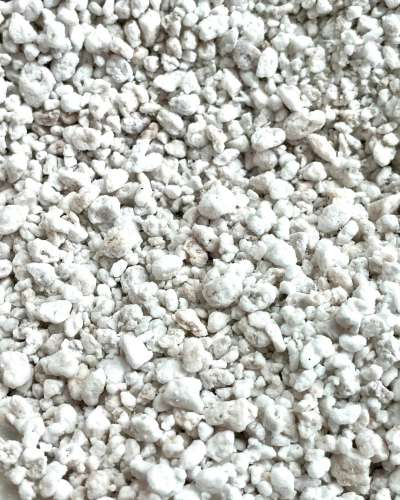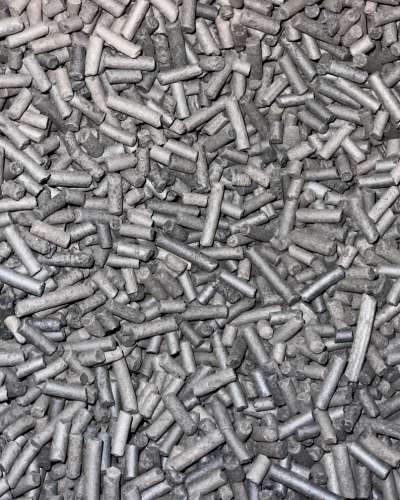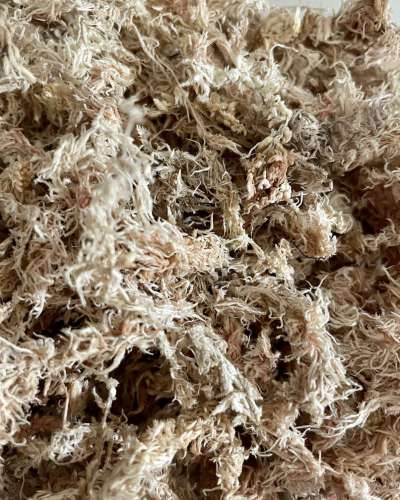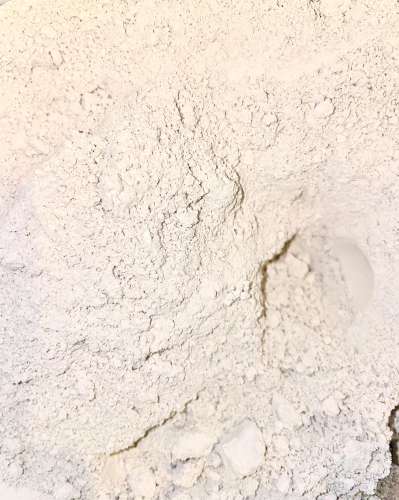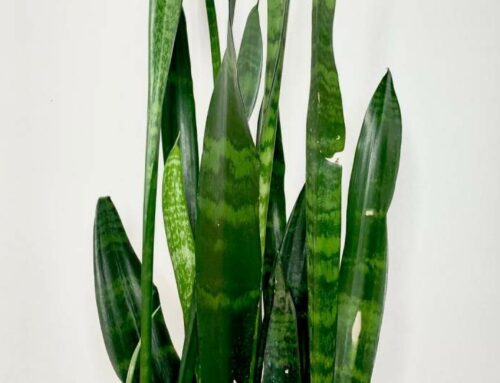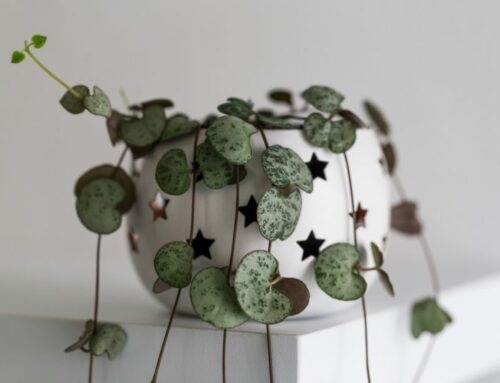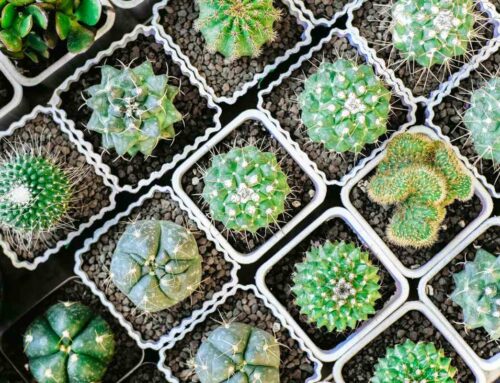How to water succulents? How much light do succulents needs? Is it better to grow a succulent in an inorganic substrate or potting soil? Can you propagate Echeveria from just a leaf?
If a succulent has recently joined your plant family, these care-related questions are probably on your mind. Succulents are easy to care for, and make great houseplants that can brighten up any spot in your home due to some of them having really vibrant colors! This detailed succulent care guide will answer all important questions relating to how to care for your little succulent so that can thrive in your home.
Succulents originate from dry, arid regions of the world, such as deserts. They are adapted to survive in these conditions by storing water in their leaves, stems, and roots. Succulents are pretty much found on every continent except for… well, Antarctica. The word succulent comes from the Latin “sucus” which translates to juice and their name is given to them due to their juicy, thick leaves.
Did you know that there are more than… wait for it: 10 000(!) different succulent types? But this number doesn’t just stop there as nurseries continuously cross them to create new varieties. This number might seem a bit overwhelming but the good news is that regardless of the specific succulent type, they all have similar (almost identical) care requirements.
Looking to add a little life to your home décor? Consider succulents! These trendy plants are easy to care for and can brighten up any space. Some of them have such stunning and vibrant colors that they resemble little jewels. So how to care for your little succulent jewel? It’s easy!
Succulents are beginner-friendly plants that are great for people who don’t have a lot of space for a large garden as they grow relatively slow and compact compared to other popular houseplants, Monstera Deliciosa, for example. This detailed plant care guide will provide you with valuable tips and tricks to keep your succulents happy, healthy, and vibrantly colorful!
This post may contain affiliate links. Read our Privacy Policy and Disclosure here.
Succulent Care – Basic Guidelines
You can find a summary of the care needs of a Succulent in the table below.
Common Names: Succulent
Origin: dry regions, i.e. deserts
Light: bright direct (outdoor succulents) to bright indirect
Water: rarely
Growing media: sand-based potting mix soil with excellent drainage; substrate for cacti and succulents, pon
pH: 4-6.5
Repot: every 2 to 3 years; some can be in the same pot for 10+ years
Temperatures: 18°C to 28°C (64.4 °F to 82.4 °F)
Humidity: up to 40%
Nutrition: fertilizer for cacti succulents with higher phosphorus to nitrogen content
Fertilize: 2 times/year with slow release fertilizer or bi-monthly with liquid one during the growing season; don’t fertilize during winter
Propagation: stem cuttings, offshoots, seeds
Pests: mealy bugs, aphids, scale
Toxic? Most succulents aren’t toxic to humans and animals.
Continue reading for a detailed guide on how to care for a succulent grown indoors.
How to Care for a Succulent
1. How much light does a succulent need?
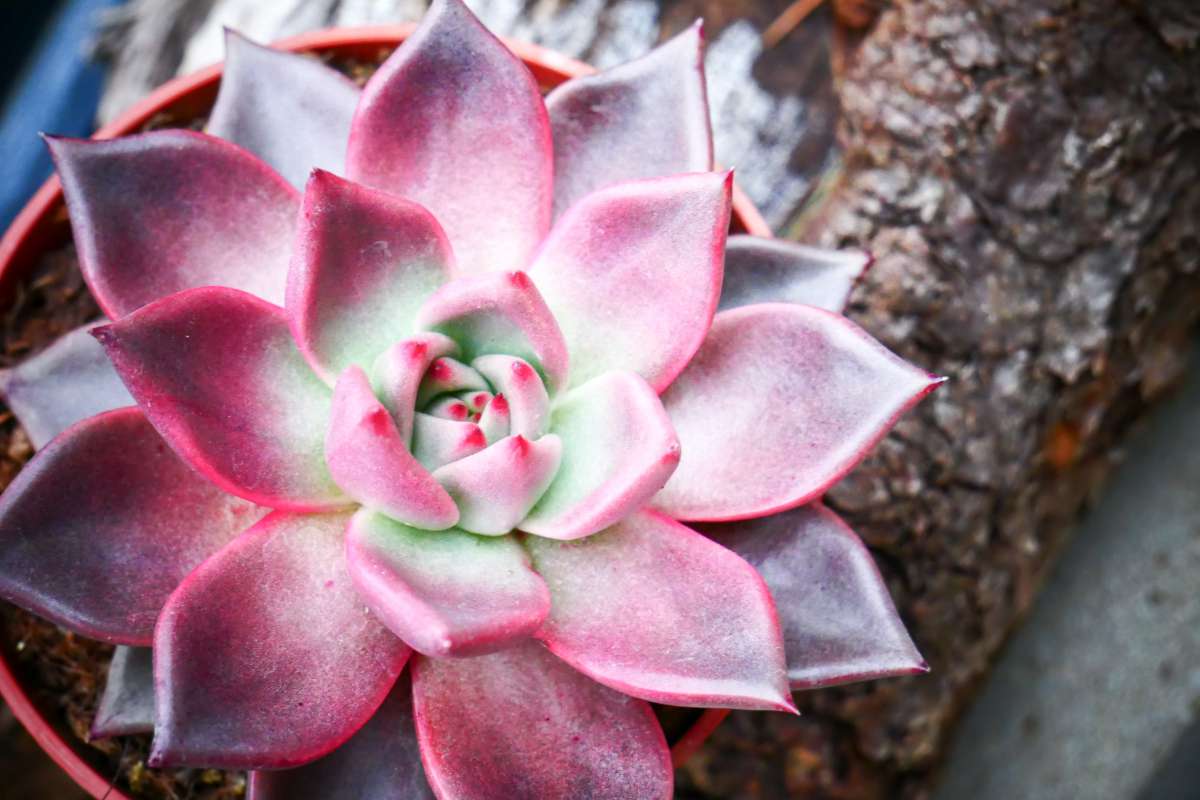
Generally, succulents prefer bright indirect sunlight and require a minimum of 6 hours of light daily. Some types, however, can also survive in a location with less light, i.e. medium light. Some succulents (especially outdoor ones) can even tolerate a couple of hours of direct light daily, however, young plants should not be exposed to harsh sun rays as they might burn. If you want to place a young succulent in a location that receives bright direct light, make sure to gradually introduce it to the harsh light by increasing steadily the amount of natural sunlight hours daily and observing how the plant responds to it.
Is the light too much for your succulent? You can pinpoint that your indoor succulent is receiving too much light (harsh light) by the appearance of scorched parts on the plant. These sunburn marks indicate that you should shield your plant from direct sun rays. You can simply position your succulent a bit further away from the window, use a window film or transparent curtains.
As mentioned, medium-light would work ok for succulents, like the genus Haworthia, but it might result in slower growth. Low light location, unfortunately, is not suitable for these plants. If there is not a good natural light source available for your succulent, consider using a grow light.
Signs that your succulent is not receiving enough light:
Succulents tend to grow straight towards their main light source. If your plant is receiving enough light, it would usually grow compact, with less distance between each new growth point (or pairs of leaves). However, if your succulent starts to stretch and looks lengthy, it’s a common tell-tale sign that the plant is not receiving enough light. Smaller leaves on some succulents (eg: Senecio, Ceropegia, Peperomia) or new growth looking pale, are other signs that your succulent is craving more light. Yellow leaves, slower growth, and lack of flowers are also signs that your succulent is not receiving enough light. If your plant is indicating that it needs more light, place your succulent closer to a natural light source or if that is not possible, supplement it with a full-spectrum grow light.
Although your succulent might survive in a semi-shadow location (medium-light), most of them will not thrive there. Low light location is not suitable for most succulents at all. For optimal growth and so that your succulent feels at its best, it would be great if you could provide a direct to indirect light location. Just please take care with young plants – they might burn from the sun and might require to be sun-trained first. Here is where a full-spectrum grow light might come in handy.
How much light (PAR) do Succulents need? This varies between different succulent species. However, the general rule is that for optimal growth, aim to provide your succulent with a light source with PPFD between 250 and 1000 umol/m2/s with a lighting period of 12 to 14 hours daily.
How much lux (foot candles) do succulents need? Whether you are using natural light coming through a window or a full-spectrum grow light, you should aim to provide your succulents with a minimum of 1, 500 lux (150 foot candles) to 3, 000 lux (300 foot candles). Some succulents will grow best when provided with at least 5,000 lux (500 foot candles) to 10,000 lux (1,000 foot candles).
How to measure the lux (foot candles) or the PAR (PPFD) number of a light source? To measure how much light is landing at a location, you use a light meter, also called a lux meter, or alternatively, there are numerous phone apps that might also work.
What is the difference between bright direct and bright indirect light when it comes to plants? I understand that these terms might be a bit confusing. Our Lighting Guide for Houseplants will answer these questions and help you decide on where at your home would be the best spot for your little (or big) cactus or succulent.
Note: Succulents can survive for a bit in a location that receives low light. However, they will not thrive there, most likely will not grow and there is a big risk of them being overwatered.
2. How Often to Water a Succulent?
Water is a factor that you should be very aware of when it comes to caring for succulents. Here is a thought to keep in mind: when in doubt about whether to water your succulent, skip watering it until you are sure that it needs to be watered.
Sounds a bit dramatic, I know but hear me out. Succulents store a LOT of water in their leaves, stems, and tubers. These plants have evolved in such a way as to survive drought periods for long. As a result, succulents are used to receive water rarely. In fact, these plants can deteriorate really fast and succumb to rot if kept too wet.Thus, when it comes to watering succulents– less is definitely more. The general rule is to allow the soil to dry out between irrigations. And keep in mind: more water but less frequently is the best option for these houseplants.
Should you water your succulent on a schedule? No. Some succulents might need to be watered weekly or biweekly during the growing season from March to October, while others less frequently. During the dormant period from October to March, succulents usually need to be watered much less and this can be even once per month.
How often you need to water your succulents will depend on a bunch of factors such as light, growing media, temperature, humidity, season, etc. Don’t water your succulent on a fixed schedule as this would be in most cases a recipe for a disaster. You see, some succulents need to be watered weekly, other bi-weekly while some – monthly.
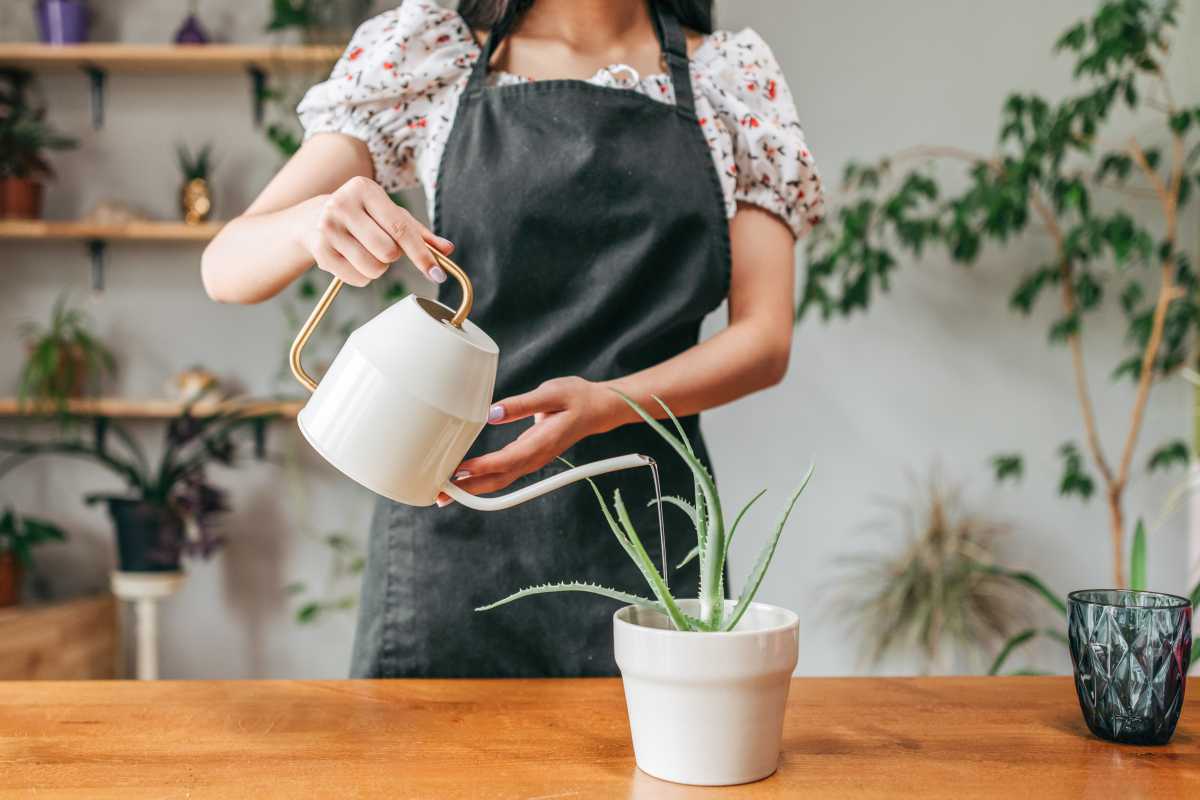
Before you water your succulent, always check the moisture level of the soil. For this, you can use a moisture meter and water whenever the meter indicates that the moisture is low. Alternatively, you can insert your finger inside the plant’s pot and try to estimate the moisture level by feeling it. You need to check at least one-half of the pot’s height. If it’s dry and the pot feels light: water your succulent thoroughly until water starts coming out of the drainage hole. If it potting media of your succulent feels still moist upon inserting your finger inside: skip watering and check in a couple of days.
If you don’t have a moisture meter or don’t feel like touching the potting soil, then you might be able to estimate whether your succulent needs a drink by lifting its pot. If the pot feels very light: it’s time to water and vice versa: no water if it’s not light. Hint: Don’t want to be the captain obvious here but… Before the pot-weight test can be used efficiently, you should note how heavy a freshly watered succulent feels in its pot.
You are overwatering your succulent? As mentioned above, succulents can deteriorate quite fast if they are overwatered. Mushy leaves, loss of leaves, or leaves turning yellow are all signs of an overwatered succulent. If there is a foul or moldy smell coming from the plant’s pot, then there is probably a rotting situation also going on underneath the soil level. Often, if you have overwatered your succulent, you would just need to wait for the soil to dry out completely before watering it again and some plants can bounce back. If you have overwatered your succulents, it is also advisable to provide the plant with more light and increase the air circulation around the pot (you can use a fan for that). If the issue is more serious, however, and your succulent is going from bad to worse, I strongly recommend reading our detailed guide on How to Treat Stem and Root Rot to save your succulent.
Underwatering succulents is less of a concerning issue but sometimes it might also happen. Signs of an underwatered succulent include: the stem and the leaves of the succulent looking wrinkled, soft leaves, leaves curling in, and slowed growth. Trust me, it is much better to underwater than to overwater your succulent so if you find some of the signs above – you’re fine. Just give your plant a good drink or if the soil has become too compact, bottom-water it to hydrate the roots fully.
The way you water your succulent matters. Check out our Houseplants Watering Guide to understand when is it better to top-water your succulent and in which situations bottom-watering would be better.
3. What is the Best Potting Mix for a Succulent?
You have a couple of options when it comes to choosing a growing media for your succulents.
Succulents can be successfully grown in potting soil, mineral substrate, semi-hydro, and some even fully in water, i.e. hydroponically.
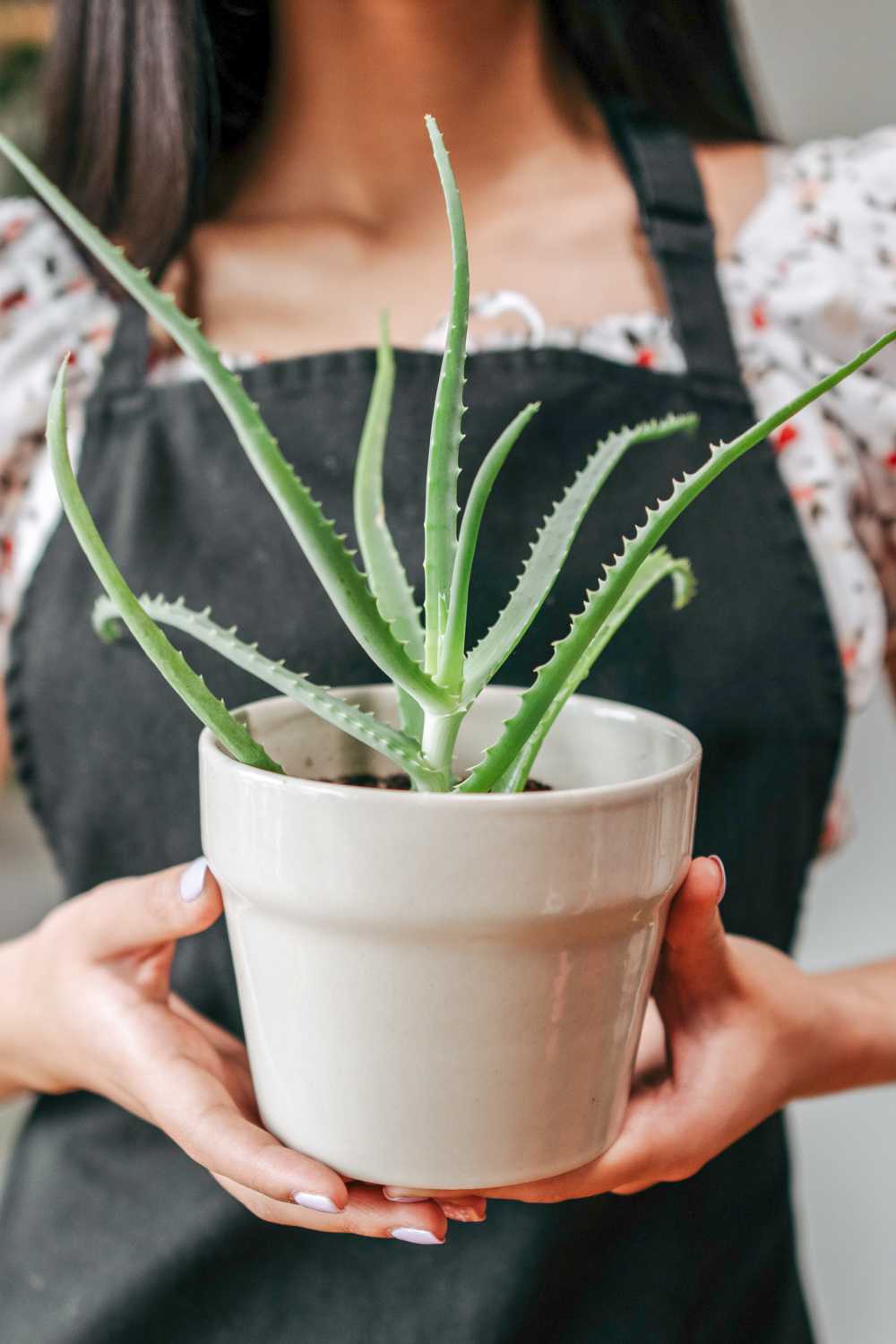
If you’re used to growing the majority of your plants in soil, then you would most likely prefer this option for your succulent too. Keep the following in mind then when choosing a potting soil for your succulent. Succulents need to be grown in a loose, rocky soil type that contains nutrients. Using pure sand might result in the medium becoming too tight over time and not allowing enough air-permeability for the roots to breathe. Choose a potting mix that is specially tailored to cacti and succulents as general soil mixes won’t work well. Alternatively, you can make your own succulent potting mix easily. Here is a simple DIY recipe for potting soil for succulents: equal parts coarse sand, perlite, and good quality potting soil.
Psst, another thing to mention that might help you with keeping your succulent happy and thriving is that you need to choose a pot with a drainage hole for it. Terracotta pots are also a great choice for succulents due to their air-permeable ability. In other words: compared to a plastic pot, a terracotta one provides more oxygen to the roots of your plant. Therefore, there is also less risk of overwatering your succulent in a terracotta pot. And let’s not forget: plastic pots aren’t good for the environment, so better say ‘no’ to plastics. Your succulent and mother nature will appreciate it.
We prefer to grow our cacti and succulents in an inorganic media, i.e. soilless. The substrate for cacti and succulents that you can find in our shop is ideally suited for these types of plants as the different mineral elements in it store moisture and nutrients, provide it to the plants when needed, and thus, there is enough air around the roots.
Can you grow succulents in hydro? Yes, some of them can root and grow with ease completely as water plants. For example, Peperomia Prostrata and the different Ceropegia Woodii varieties are great candidates to give hydroponics a go. Succulents, like cacti, usually have thin, shallow roots. Therefore, LECA would perhaps be too big for them if you want to grow them in semi-hydro. However, pon or the substrate for cacti and succulents in our shop can both be used to grow these plants semi-hydroponically. If you want to grow your succulent without any organic matters, make sure to use an appropriate fertilizer for cactus and succulents regularly. This is because potting mixes that contain no soil, also have no natural nutrients in them.
4. How Much Humidity Does a Succulent Need?
You don’t really need to worry about the humidity levels around your succulent unless the humidity is too high or you’re propagating it. Normal room humidity works fine for succulents. In fact, if these plants are exposed to high humidity levels for a prolonged amount of time, they can start rotting.
The ideal humidity level for most succulents is up to 60%. You can measure the humidity in a room by using a hygrometer.
What are some signs that the humidity is too high for your succulent?
Usually, leaves are the first to start rotting, becoming yellow and mushy if the humidity is too high around your succulent. If not corrected timely, this can progress to more serious rotting issues. If your succulent is showing signs that the humidity is too high for it, consider a dehumidifier. Alternatively, increasing the airflow around your cactus/succulent can also help. You can do this by using a small fan. Just make sure that the wind stream is not directly targeted at the plant but rather is circulating the air around it.
Important: Succulents don’t like it if their leaves get wed. Therefore, avoid misting your succulents or splashing too much water on them while watering them.
5. How Often to Fertilize a Succulent and Which Fertilizer is Best?
Succulents need regular nutrition during the growing season (March to October) but you don’t need to fertilize them when they are not in an active growth stage. Depending on the growing media that you are using for your succulent, you might have to opt for a different fertilizer.
If you are growing your succulent in soil: choose a fertilizer for cacti and succulents specifically and make sure that the fertilizer has been designed for plants that are grown in soil. Vice versa, if you are growing your succulent in hydro media or inorganically, opt for a fertilizer that has been specially formulated for these types of growing media.
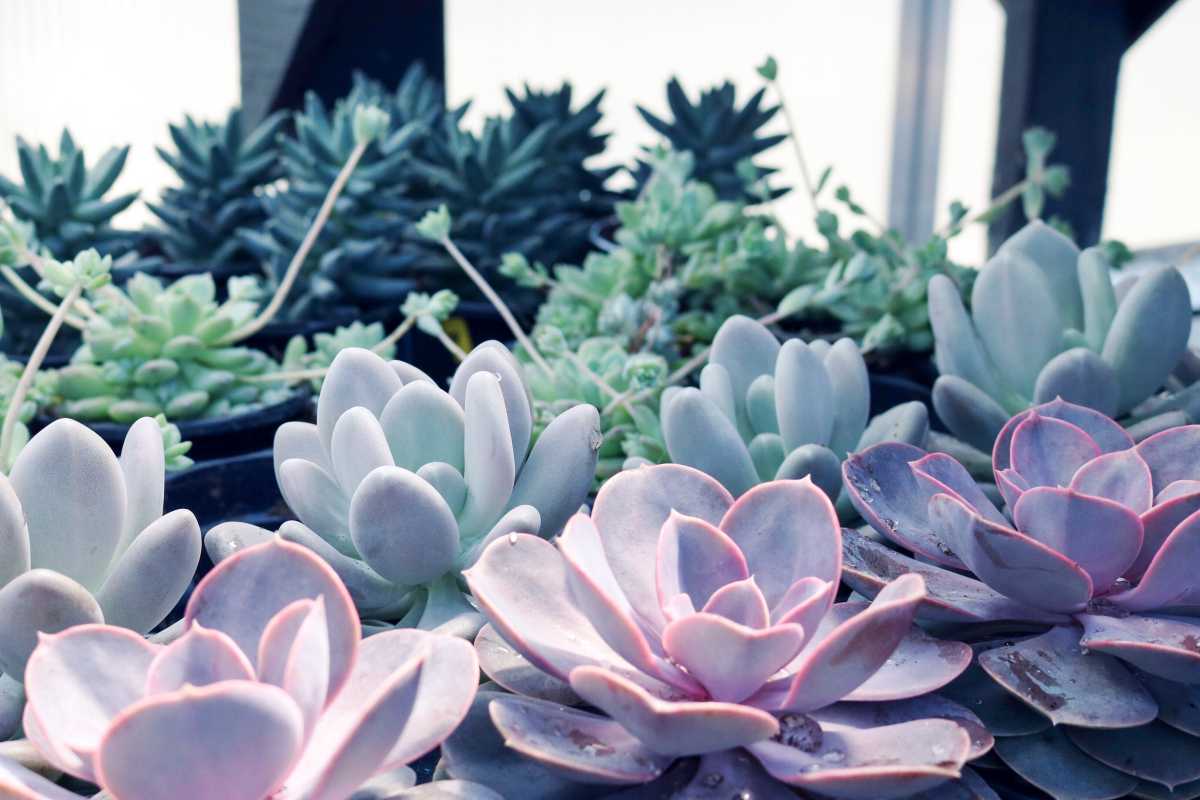
What type of fertilizer is best for a succulent?
Choose a fertilizer for your succulents that has a higher phosphorus to nitrogen content. Too much nitrogen in the fertilizer, can make your succulent growing in a more stretchy way. There are a lot of fertilizers that have been specially manufactured to suit succulents’ and cacti’s needs. Opt to choose a specially formulate fertilizer for your succulent.
How often to fertilize succulents indoors: The fertilization frequency for your succulent would depend on the growing media and on the fertilizer that you are using.
- You can opt to use slow-release balls that are usually applied as a top dressing on the soil 2 times per year (during early spring and mid-summer).
- Alternatively, there are numerous choices of liquid fertilizers that would need to be used more regularly, i.e. in most cases monthly at a diluted dose.
Tip: If you choose a liquid fertilizer, always follow the manufacturer’s instructions and my advice would be to start slow and build up gradually the dose from there. For example, I’d start with a low dilution (eg: 10 to 20% of the recommended dose) and see how the plant feels before increasing the dose. This way, you can regulate the nutrient intake and avoid fertilization burn in succulent.
Note: If your succulent is still young or a baby plant, always use a really diluted fertilizer at first (eg: 10 to 15% of the recommended dose) and observe how well the young plant tolerates it before gradually increasing the amount.
If your succulent is growing in inorganic media: choose a fertilizer that has been designed for hydroponics. Organic fertilizers and those formulated for plants grown in soil might be ineffective for inorganic media and some of them might have a too high concentration of salts and thus, result in root burn. If your succulent is growing in hydro or semi-hydro, you might need to fertilize it more often versus one grown in soil, as inorganic substrates usually don’t contain natural fertilizers.
For best nutrient absorption, keep the pH of the water around 5.5 whenever you’re fertilizing your succulent. The general advised pH range for succulents is between 4 and 6.5. You can check this value by using a pH meter and then either lower it with an acid (eg: citric acid) or make it higher with a base (eg: natron). You can measure the pH of a liquid with a pH meter.
Tip: Always check the pH value AFTER you have added liquid fertilizer to the water.
6. Do You Need to Clean a Succulent?
The majority of succulents, unlike other houseplants, don’t really collect dust on their leaves, hence, it is not a must to give them a good shower here and there. However, if your succulent has larger leaves and you see that there is dust accumulating on its leaves, it’s a good idea to clean it monthly or bimonthly. Keeping the leaves of your succulent ensures that the plant is able to photosynthesize at its best and also decreases the chance of harboring pests, as usually, pests prefer dusty plants where they can hide in peace.
How to clean a succulent from dust?
To clean your succulent, whenever possible, don’t use water as they don’t like being wet. Instead use a soft brush, like a makeup brush, to clean away gently any debris or dust on the plant.
7. The Best Growing Temps for a Succulent
Some succulent varieties are frost-resistant and can happily live outdoors for the whole year, regardless of the seasonal changes. Bear in mind, that these are succulents labeled as outdoor ones. You can’t just throw any succulent out in the cold, I’m afraid.
The majority of succulents that are grown as houseplants, however, aren’t frost-resistant and temperatures below 10 °C (50 °F) can damage them. For those types, temperatures below freezing can kill the plants.
Indoor succulents should always be kept at temperatures above 16°C. In fact, for the majority of succulents, the ideal growing temperatures where they feel at their best are anywhere between 18 °C and 28 °C (65 °F to 85 °F).
Tip: Most succulents that are cultivated as houseplants dislike wind. So be sure to protect your succulent from any strong drafts.
8. Rotate Indoor Cacti Regularly
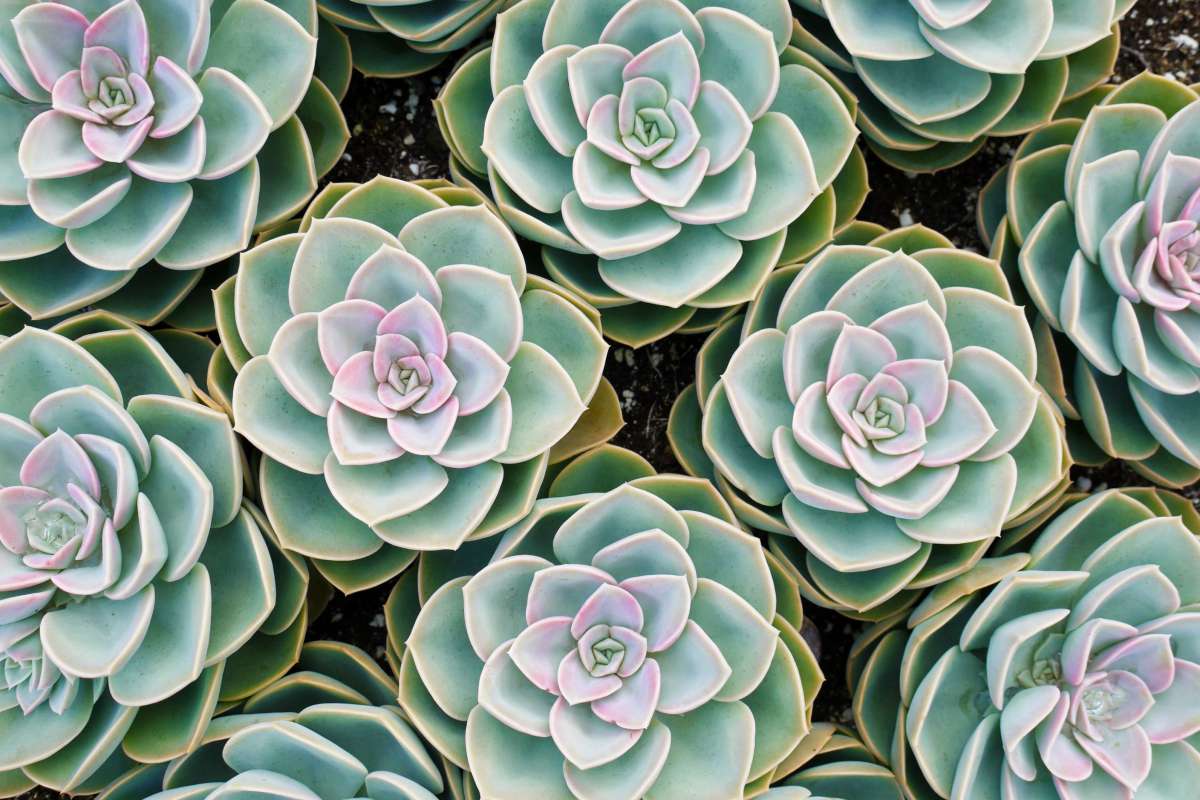
The majority of succulents (eg: Echeveria) will go to seemingly physically-defying ways to get as much light as they need. Thus, to ensure that your succulent is growing in a balanced way from all sides, rotate your plant periodically so it gets light from everywhere and so that it doesn’t need to reach out and potentially look like tentacles in a pot. Rotating your succulent also ensures that all leaves receive light and that the plant won’t start shedding any of them due to lack of light.
Hint: Grow lights positioned just above a succulent are great to ensure that the plant grows upwards rather than sidewards.
9. How to Identify and Treat Pests on Succulents
Succulents are rarely (if ever) the target of pests. However, there are exceptions to this which are fortunately not common. So lets look at the pests that might be bugging your precious succulent.
The most common pests found on succulents are soft shell scales, i.e. mealybugs. Mealybugs are easy to spot as they look like little white fluffy turtles that don’t move particularly fast. Spider mites and thrips can also be found on some succulents (eg: Senecio / Curio Rowleyanus, also known as String of Pearls) but these bugs usually prefer more leafy plants like Monstera and Philodendron.
Pests can’t always be prevented on houseplants but a good plant care routine is to check your succulents for an infestation regularly. Catching pests on your plant before a full-blown infestation has developed will make the whole issue much easier to deal with.
If you suspect that your succulent might have become the target of pests, make sure to check our step-by-step guide on how to identify and get rid of pests on houseplants.
But let’s summarize what to do if you spot pests on your succulent: Did you see things crawling on your plant? Then isolate the plant and place it away from other houseplants immediately upon noticing any intruders. Next on, give your succulent a good shower and gently rub it to physically remove as many bugs as possible. Try to not get the potting soil too wet to avoid rotting issues. Allow your succulent to dry and then you can spray it thoroughly with a natural and bee-friendly pesticide, eg: neem oil or rubbing alcohol. Repeat the application when necessary. Bear in mind, chemical pesticides should be used only as a last result as they most of them are not bee-friendly and are harmful to the natural pests’ predators, eg: lady bugs, predatory thrips, etc.
10. How to Propagate a Succulent
Propagating a succulent is straightforward and easy. However, depending on the plant you are propagating and on the propagation technique that you are using, it could be that the young succulent needs a good 6 months time to be ready for repotting. This is especially the case for seedlings.
The three different ways that succulents can be propagated are cuttings, offshoots, and seeds.
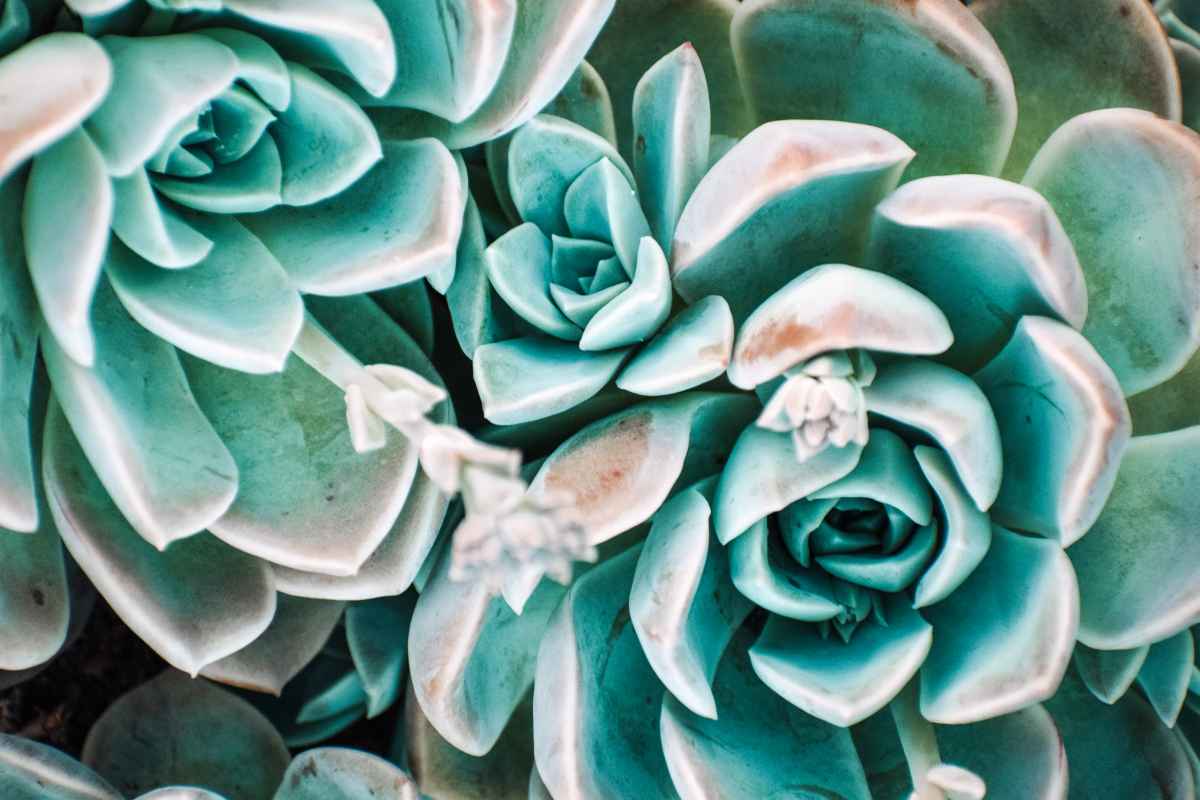
Regardless of which propagation method you use for your succulent, there is one important thing to keep always in mind: do it when the time is right.
When the weather becomes cold and the plants start getting less and less light, they also start growing slower. During the colder months, succulents generally become semi-dormant. Hence, the best time to propagate your succulent is definitely not in winter. Wait until spring and summer if you want to propagate your succulent successfully.
Are the birds chirping? Little flowers starting to grow? There is that fresh smell of new life in the air? Must be spring then. Now it is action time, aka it is time to propagate your succulent.
First thing first, arm yourself with patience. Your new baby succulent will probably not be ready to be replanted and classified as an adult plant until 4 -6 months have passed.
How to propagate succulents:
To illustrate how some succulents are propagated, I will use one of the most beloved and popular representatives: the Echeveria.
Succulents, part of the Echeveria family, can be propagated easily in all the three different ways mentioned above:
How to propagate succulents (Echeveria) from stem cuttings:
The majority of succulents are propagated through stem cuttings. We have a step-by-step guide on how to propagate houseplants from cuttings, so make sure to check it out to avoid common pitfalls when propagating plants.
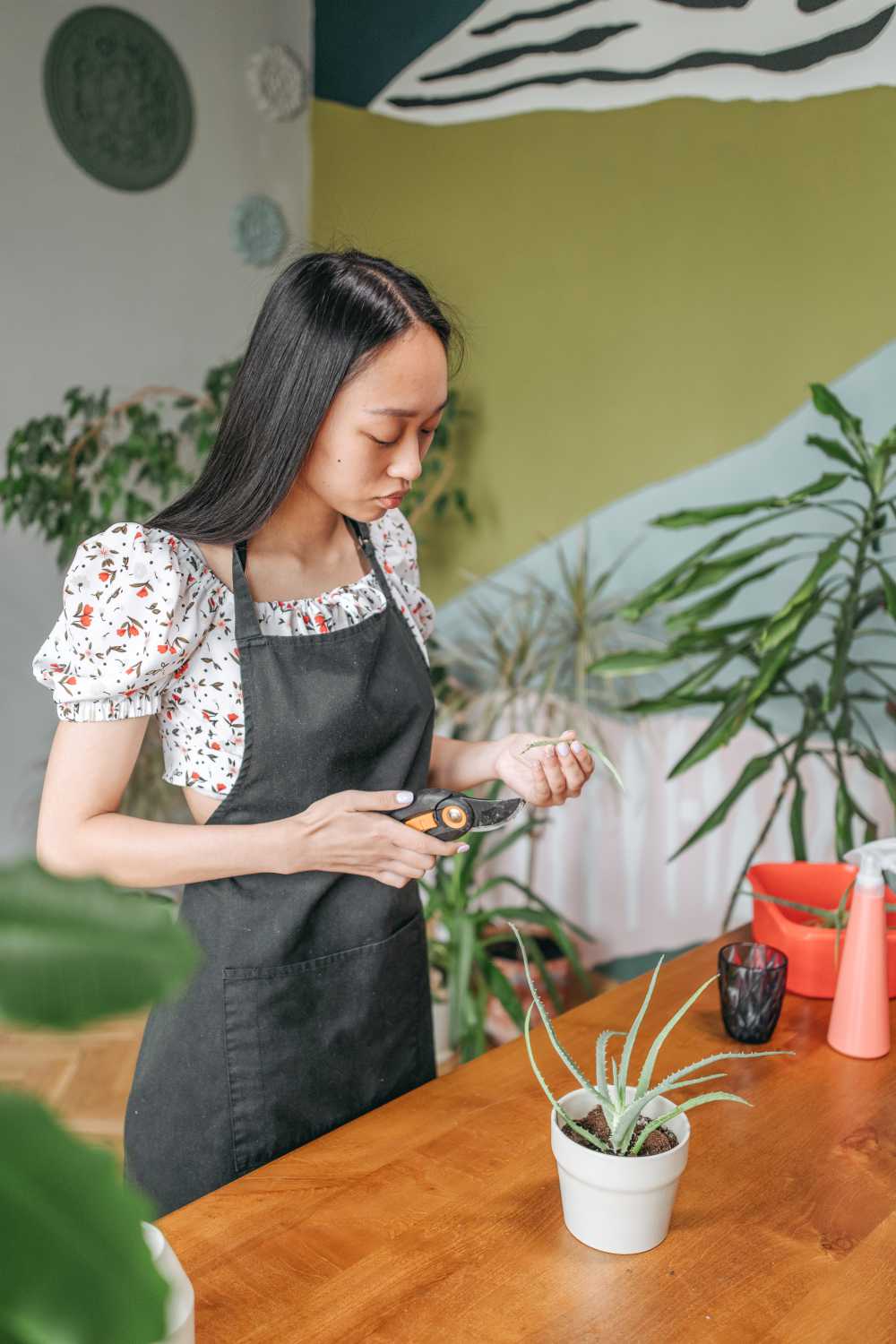
To summarize, here is how to propagate a succulent from cuttings: Arm yourself with a sharp knife or shears and disinfect it with at least 70% rubbing alcohol. Cut parts of the plant that you’d like to propagate. A good rule is to include at least 4 pairs of leaves when separating the main stem. Allow the wound to callus by air-drying it for 24 hours. Next, just like with cacti cuttings, either place it directly on top of a sterile potting mix or on a substrate for cacti and succulents. Alternatively, you can bury the end slightly in to keep it more stable. Ensure that at least one node is in direct contact with the media – roots will grow from there. Keep your succulent cutting warm, and bright, and mist the top of the growing media regularly but ensure it doesn’t get too soggy. Soon you should see tiny roots forming from the last node that touches the ground.
Psst, you can also water propagate the majority of succulents. Simply place the cutting (after the wound has been callused) in a cup filled with water (rainwater or distilled preferably). Change the water every couple of days. You can wrap the cup (if it’s transparent) with aluminum foil to keep it in the dark, as darkness can speed up the overall rooting. After your succulent cutting has grown enough roots, you can either plant it in a potting mix or substrate for cacti and succulents. Alternatively, you can also continue growing it as a water plant or in semi-hydro, like pon.
Hint: A propagation station might also be a bit more stylish alternative to the usual cutting in a glass scenario. And some succulents displayed in a propagation station (eg: Peperomia Prostrata or Ceropegia Woodii Variegata) look absolutely stunning.
How long until succulent cuttings form roots? This period obviously varies between different succulent species but most will start showing root activity within 3 to 4 weeks. Bear in mind, however, that some might sit dormant and start rooting up after more than a month. So unless your succulent cutting is obviously dead, don’t give up on it.
How to speed up the propagation of succulents:
To increase the chances of propagating your succulent successfully (and to cut down the time it takes), keep the cutting, leaf, or seeds warm, and bright, and don’t be afraid to increase the humidity slightly. Grow lights can speed up the propagation process of succulents if no natural light is available. Usually, the weather is warm enough during spring and summer and a heating or propagation mat is not a must. However, if the temperature where the succulent cutting is below 23 °C (73.4 °F), a heat mat might come in handy. Raising the humidity also can speed up the rooting process but aim for something in the range of 60-70%. You can use a humidifier to speed up the rooting of your succulent (in our case: Echeveria) but make sure that there is also enough air circulation, here, a desk fan might be helpful. Alternatively, you can use a propagator, humidity dome, or a simple zip-lock bag to increase the humidity. If you opt to use a zip-lock bag, make sure to open it daily to allow fresh air to flow in.
How to propagate succulents from offshoots (offsets):

You probably have seen that some succulents create little ‘baby’ succulents while growing. It’s like a little succulent attached to the parent plant. You can see on the image above that from the succulent on the right, there is are two offshoots growing from the mother plant.
If you see that there are multiple growth points on your succulents, you can simply separate the suckers, also known as offshoots, from the mother plant and plant them on their own. Make sure to use a sharp tool that has been properly disinfected beforehand (eg: with rubbing alcohol) and allow the cut place to callus before planting the little ones.
Psst, if you are unsure what are offshoots or how to recognize them, check our guide on plant propagation methods made simple.
How to propagate a succulent from seeds:
Most succulents can be propagated from seeds but this is usually rarely done as the plants need years to mature and flower, and not all are self-pollinating.
Let’s look at how to propagate Echeveria succulents from seeds. The image below shows a gorgeous Echeveria’s flower. Mesmerizing, isn’t it?
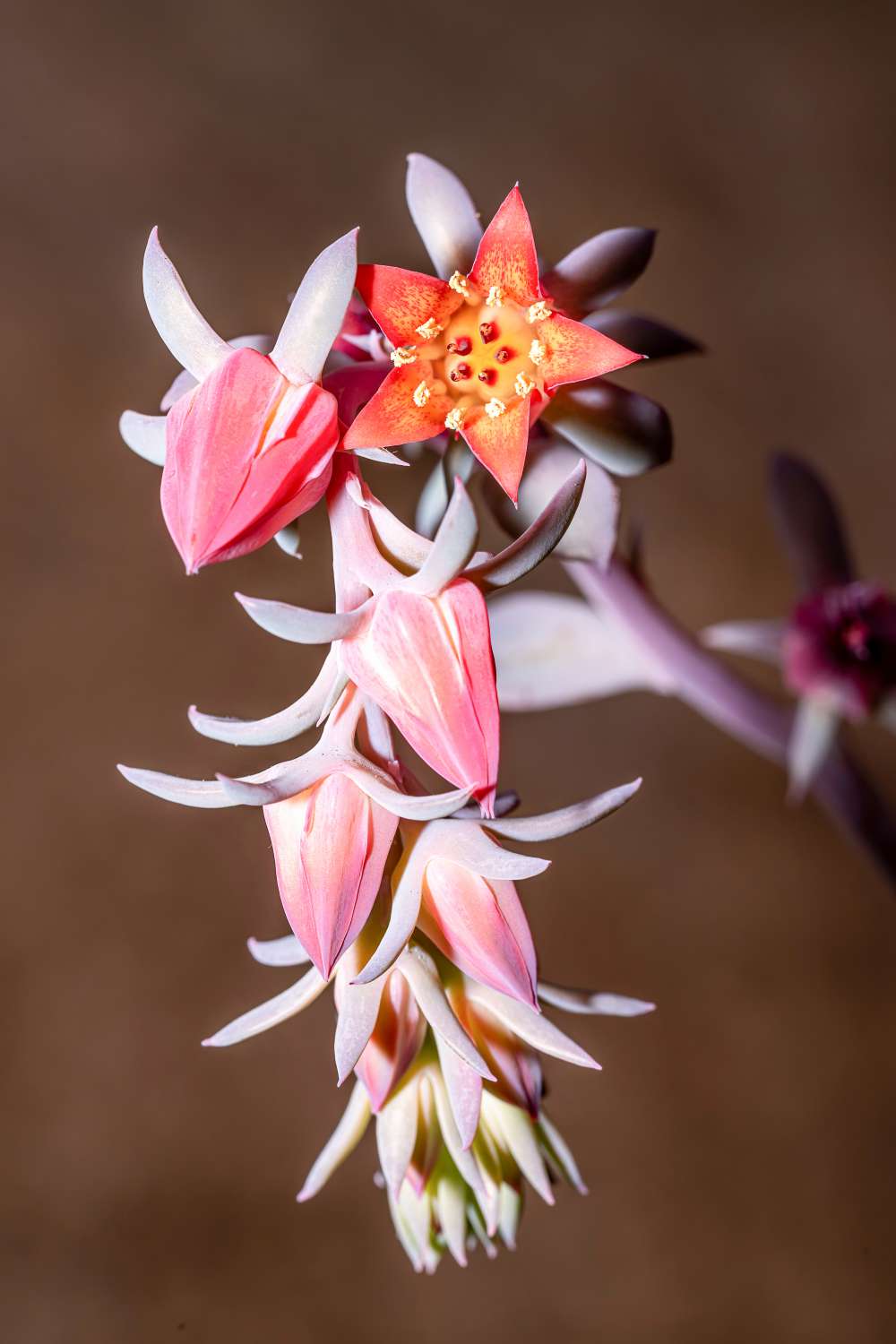
To seed propagate a succulent you need it to flower first. So, wait until your succulent has bloomed. Echeveria is not-self pollinating so you would need a second one if you want to produce seeds. The good news is that Echeveria’s flowering period is quite long – 3 months so if you have two of them, there are big chances that they will bloom during the same time and then you can cross-pollinate them.
If you happen to have two Echeveria succulents flowering, use a soft brush and gently rub it inside one of your Echeveria’s blooms. Then, with the same brush go into the blooms of the other plant. Repeat the process a couple of times and if successfully, there will be little seeds soon enough.
Collect the seeds and sprinkle them on top of your soil mix. Keep them warm, bright, and slightly moist until new tiny succulents start coming out of the grown. When the plants are big enough, they can be potted up separately. Just be very careful with their roots.
How long do succulent seeds take to germinate? The germination time can vary based on succulent species, light, and temperature. But generally, you can expect succulent seeds to germinate in about a week to 2 months.
The special case: How to propagate succulents (Echeveria) from a single leaf:
Echeveria succulents are a bit special in this propagation method, most succulents, however, are best propagated through stem cuttings as mentioned above. Bear in mind, that most succulents can’t be propagated from just a leaf as there are no nodes there.
Did you know that you can propagate Echeveria from a single leaf alone? Amazing! So how to do it?
To propagate an Echeveria from a leaf, gently peel off a leaf from the ‘stem’ of your succulent. Allow enough time for the wound to be callous. Then just place it on top of a sterile potting mix or use inorganic substrate for cacti and succulents and mist without getting the media soggy. Keep the little one warm, and bright, and mist the top of the substrate from time to time when you see that it has dried out. Within a couple of weeks, little white roots should start forming from the lower part of the leaf where it was initially attached to the stem of the parent plant. After that, tiny leaves will also start appearing and in time, a little succulent will form from the leaf that you propagated. However, if the propagation is not successful, the leaf will slowly become soft, yellow, and die. But that is fine. Propagation is never a 100% thing.
Once again, most succulents are propagated from stem cuttings. So if something is unclear and you are still wondering how to propagate your succulent? Here is a detailed step-by-step guide on how to propagate plants from cuttings.
11. How to Repot a Succulent
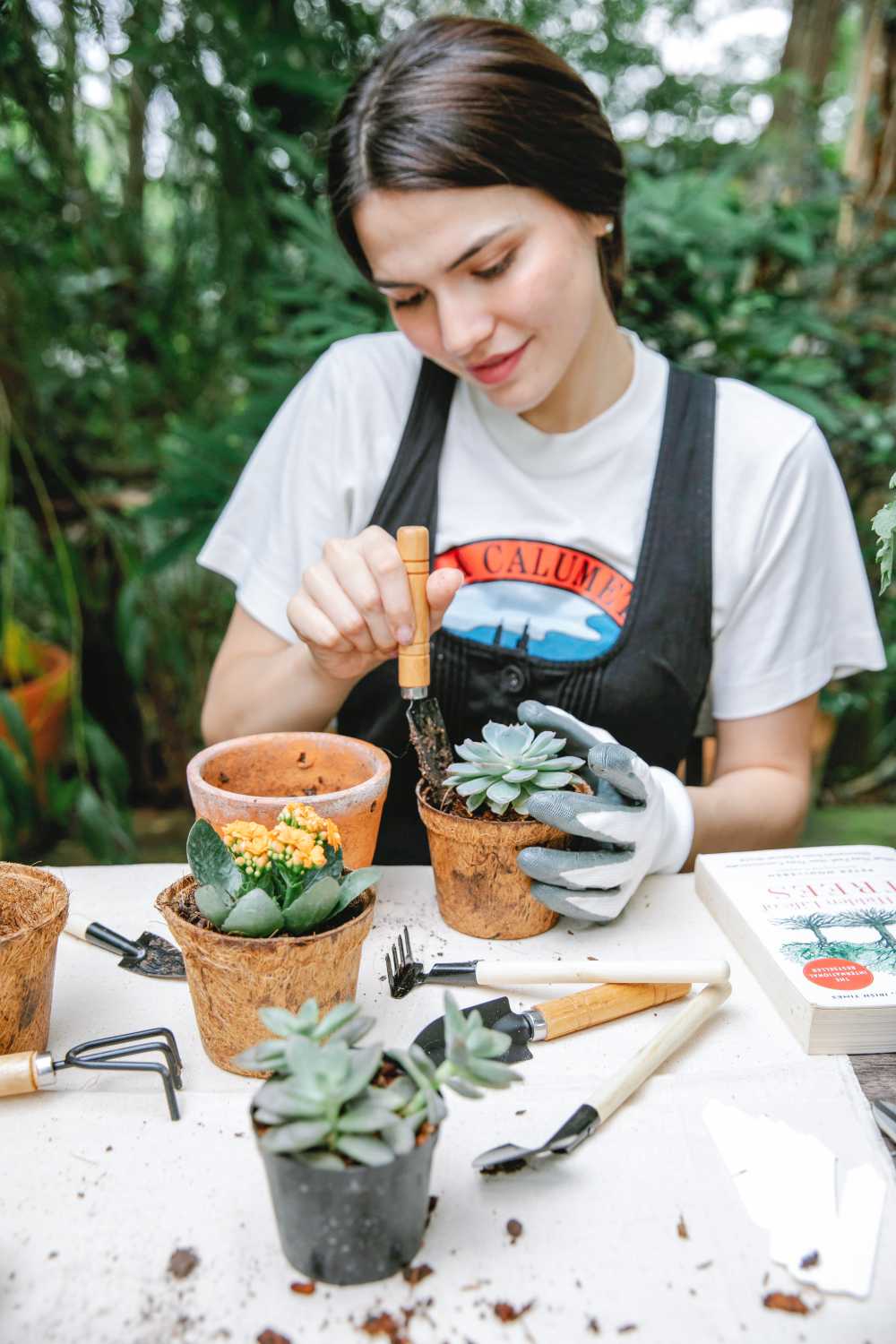
How often to repot a succulent? Most succulents can happily live in their current pots for 3 -5 years and some even more than that as usualyl, their root system is not the biggest and their roots remain shallow.
With that in mind, repotting any plant is a stressful procedure for them, thus, consider if it’s needed for your succulent to be repotted soon or not. Also, unless it’s a plant emergency, like stem or root rot, it’s advisable to wait until your succulent is in its active growth stage – that is, during spring and summer as succulents go either semi- or completely dormant during the colder months.
Hint: If your succulent has just arrived in the mail, don’t jump on repotting it straight away. Allow the plant 2 weeks at least to rest and recover from its journey.
If you have decided definitely that it’s time for your succulent to be moved to a new pot, then make sure to check out our detailed guide on repotting houseplants. It’s a step-by-step guide that will prevent you from making common mistakes when repotting plants.
Here is a summary of how to repot a succulent correctly:
Let’s start with a few preparation steps before actually repotting your succulent. Choose the next size pot for your succulent. Eg: if it’s currently in a 10 cm pot, go for a 12 cm one (if it’s in a 4 inches pot, its new one should be a 5 inches one). Consider using a terracotta pot for your plant as unglazed clay pots allow for better air permeability around the roots and succulents will appreciate the extra boost. After choosing the new pot for your succulent, decide whether you will be using a potting mix or an inorganic substrate for cacti and succulents.
Got all checked? Good. Next, it’s time to get dirty.
Succulents can be removed with ease when their current potting media (soil) is relatively dry. Gently remove your succulent from its pot and get off as much old soil as possible without damaging the roots. Fill a third of the new pot with the growing media, then plant your succulent in its new pot and cover with more media. After your succulent is sitting happily in its new pot, water the plant thoroughly – until water starts coming out of the drainage hole. Place your freshly replanted succulent in a bright location and enjoy the new growth that comes after a pot upgrade!
13. Succulent Care: Common Issues with Succulents
Succulents are pretty resilient plants so if yours look as if they are a bit under the weather, most often than not, water is to blame.
Before I continue with common care issues when it comes to succulents, let me just say this: not every yellow leaf on your succulent is a sign of disease or potential dismay.
It is perfectly normal, yes, even for succulents, to shed an older leaf from time to time. So don’t panic if your gorgeous Echeveria or Ceropegia is turning one leaf yellow and getting rid of it. It’s the cycle of life: older leaves die eventually and new ones grow. However, if the situation with leaves turning yellow on your succulent makes progress and gets worse and worse each day, then there is something wrong with your plant.
Overwatering a succulent is the number one reason for these plants to become sick. They can go from bad to worse dramatically fast so if you notice that your succulent starts getting steadily yellow leaves that are falling off, you need to act fast.
Stem and root rot issues are quite common with succulents precisely because they have been given too much water and too often while not being provided with adequate light and airflow. In most cases, even if you have overwatered your succulent, you can very well save it. You need to speed up the drying time of the soil. To do this, provide the plant with more light (i.e. grow lights can help a lot) and increase the airflow around the cactus / succulent (with a fan, for example). Next on, sit and wait, and don’t water your plant until the soil has completely dried out. In a good week or so, your succulent should start to perk up, but if not, then there is perhaps a more serious issue going on. If your plant starts looking worse, make sure to read our detailed guide on how to treat rot-related issues on plants.
Fungal and bacterial problems on succulents are quite rare but they are also possible and yes, you guessed it, it’s water yet again to blame!
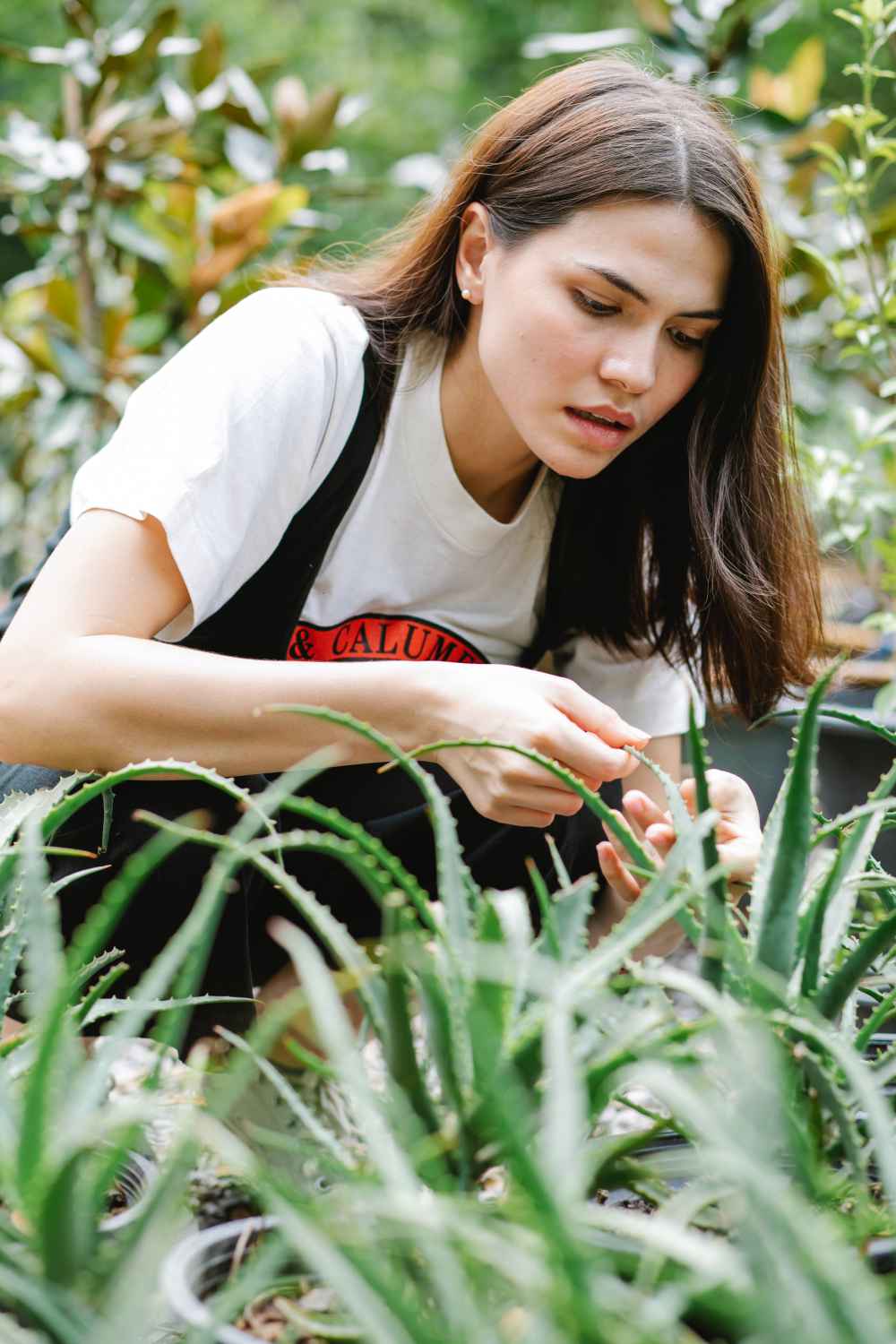
Signs of fungal disease on succulents:
Fungal spots usually appear as an extra growth on the plant’s leaves that might look a bit fluffy visually due to spores growing at said spots. If the fungus is provided with an appropriate growing environment, you will see the spots replicating and spreading quite rapidly. Common fungal diseases on succulents are powdery mildew and rust fungus. The color of fungal spots can vary, for example, mildew appears as grey-white spots, while rust fungus is well, rusty.
How to treat a fungal problem on a succulent: If your succulent has fallen the victim to fungus, first and foremost, isolate the plant immediately to limit the spores from landing on other plants around. Next on, if possible, remove any affected leaves, dispose of them immediately and wash your hands really well. Apply an appropriate fungicide based on the fungus on your plant. Different fungi types need to be treated with different chemicals but a copper-based fungicide would work in most cases. Repeat the fungicide application as needed. Increase the air circulation around the plant (using a small fan, for example) and provide it with sufficient light (use a full-spectrum grow light if no natural light source is available). Keep the plant in isolation until any signs of infection have cleared.
How to prevent fungal diseases on a succulent: Preventing the development of fungal disease on your succulent is easier than treating an illness. As mentioned, fungus spreads and grows when the environment is allowing it to. Therefore, never ever get water on the leaves of your cactus / succulent, and don’t mist these plants. Increase the air circulation around your succulents to prevent spores from settling on the leaves and growing, and to ensure the leaves stay dry. A desk fan can do wonders.
Edema on a succulent:
Edema on the leaves of succulents: Edema (also called oedema) spots appear as dark brown blotches that sometimes look as if there is a blister. Edema spots can also appear visually to be slightly wet and glance. Even if you find edema spots on your succulent – don’t panic. This is not a disease in any way. Edema suggests that there is a physiological problem in the transpiration process of the plant. Usually, edema spots are caused by the root system of a plant absorbing more water than the plant can use or can transpire (evaporation through the leaves). At this point, the cells on the leaves burst due to high pressure. What you see are dead parts on the leaves. You can’t bring those cells back to life, I’m afraid but you can prevent further edema damage from appearing on your succulent.
To prevent edema (oedema) on a succulent: first and foremost, ensure that the roots are not sitting in a soggy, compact potting mix. The roots of a succulent need to breathe, so always use either a potting mix that has good drainage and is specially formulated for succulents or a substrate for cacti and succulents. Next on, ensuring that you are only watering your succulent when its potting media is dry is key to preventing edema. Also important to keep in mind: provide your succulent with adequate light and fresh air.
As mentioned, the most common issues with succulents are due to improper care, namely: too much water. I can’t stress this enough: always allow the soil of your succulent to dry out between irrigations and provide the plant with sufficient light. Don’t mist them, and don’t get any water on their leaves. In fact, to avoid water droplets landing on the leaves of your succulents, bottom watering them is a good option. How to bottom water your plant? Check our watering houseplants guide to find out about the pros and cons of bottom-watering plants.
14. Can You Grow Succulents in a Terrarium?
Absolutely! Succulents are among the best and most well-suited plants to be grown in a terrarium. They have mostly shallow roots and since the majority of them don’t grow particularly fast, you can choose whichever size of an enclosure for them without worries that they will outgrow it soon. Just a word of caution: use a terrarium without a lid for your succulents and make sure that the potting soil is not a general potting mix but provides enough drainage and is suited to their needs.
To make it easier for you we have a set of substrates that you would need for your Succulents & Cacti terrarium. Make sure to check out our DIY Terrarium Cacti & Succulents Set.
And psst, wondering how to build a plant terrarium? It’s easier than you think! Find out how in our step-by-step guide on How to Make a Plant Terrarium.
15. Are Succulents Toxic?
Most succulents are not poisonous to humans and animals. However, the word most is important here. Some contain chemicals that can irritate the skin upon touch, while others if ingested, can cause stomach discomfort and irritation.
So even though most succulents are fine and not toxic, it’s best to not risk a stomach discomfort and don’t touch or eat them.
Succulent Care: Final Thoughts
In this detailed guide to caring for succulents as houseplants, different care needs of these unique and low-maintenance plants were summarized.
Succulents are amongst the best plants for beginners due to their easy care needs. The golden rule when it comes to caring for them is: provide them with plenty of light and always ensure that the soil dries out between waterings. Succulents are easy to propagate and some (like Echeveria) have their own unique ways of propagation that makes the experience even more fun to attempt. Oh, and, succulents are great candidates to be grown in a terrarium as they are relatively slow growers.
We sure hope that by following the tips in this detailed succulents care guide, your plants thrive and bring you years of colorful joy! 😊

